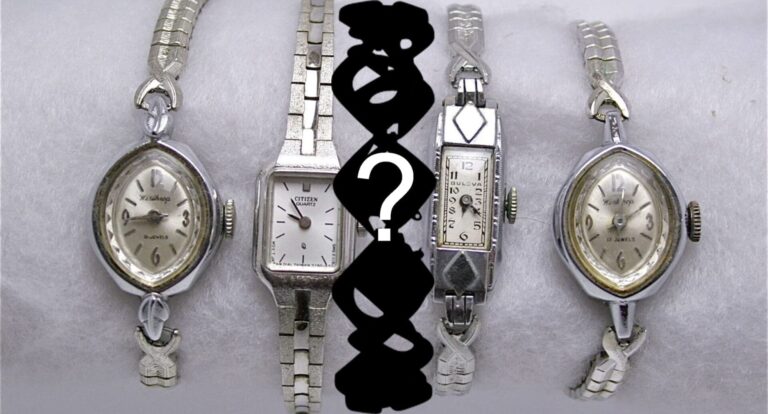Fergus Nash
There are two major forces operating as historians in the watch industry: a group of enthusiastic collectors who amass knowledge and record every detail they can, and the marketing departments of brands who may omit or exaggerate certain facts in order to convey their employers’ heritage to the public consciousness. Unfortunately for those of us who deeply love the historical side of the hobby of watch collecting, it is the latter force that spreads the information the widest. When I began researching the smallest watches ever made, I was surprised to find that no one had ever compiled a definitive list, but that led me to a fascinating discovery.

Before World War I popularized wristwatches among men, the wearer’s watch was considered more like jewelry than a functional timekeeping tool. There were hundreds, if not thousands, of brands making tiny women’s watches, the size of a thumbnail and strapped with rope or chain. Very few watchmakers had the patience or ability to repair such tiny mechanical movements, so many of these watches deteriorated beyond repair or were simply thrown away. The trend quickly shifted to larger watches for both men and women, but there’s definitely something very magical about a wristwatch so tiny it’s almost unreadable, like a fairy clock.


Search for the smallest watches and movements and you will quickly see thousands of results for the Jaeger-LeCoultre Caliber 101. It is one of the oldest mechanical movements still in production and also the smallest. Other smallest mechanical movements include the Bvlgari Picolissimo Caliber BVL 100, Blancpain Ladybird R550, and Le Tan Manufacture LTM1000. While these are impressive, I was not satisfied with the “mechanical” modifier. If Jaeger-LeCoultre could make a 14mm x 4.8mm x 3.4mm hand-wound movement, surely they could make an even smaller quartz caliber.


Considering the vast majority of watch enthusiasts are male and prefer mechanical watches, it’s not surprising that there isn’t much discussion about small quartz watches for women. Short of sifting through every watch ever made and bookmarking the smallest one, I wasn’t sure it was possible to get a definitive answer about the smallest watch of all time. That was until I found one: a timeline of Citizen’s achievements on an Australian website. There, dated 1967 with no photos or further information, it made the simple claim that they had made the world’s smallest women’s watch at the time.


If Citizen had really claimed the world’s smallest pre-quartz watch, it would have been big news and a major blow to the JLC Caliber 101. Upon further investigation, I found mentions that Citizen had released another “smallest movement” in 1980 and the “smallest solar movement” in 1998. Clearly, Citizen had a previously unemphasized interest in small watches, and I needed to get in touch. Since I did not have a contact for Citizen, I sent a message through their global support website, expecting to be referred or rejected. What I didn’t expect was to receive a response within two hours providing me with exactly what I wanted.


A Citizen customer service representative sent me a link to the company’s Historical Models Search Engine. You can find it herewritten entirely in Japanese. With the help of Google Translate, the mystery was solved: the 1967 model was called Hi-Look, and the 21-jewel Caliber 1300 that powered it was the smallest three-hand movement at the time. This is an important feature, but unfortunately, I have yet to find the exact dimensions of the movement.


Back in 1998, the Exceed Ladies Eco-Drive featured the caliber B030, the world’s smallest solar-charged three-hand module. This movement and its derivatives have been used in dozens of different watch designs, and while rechargeable capacitors are still available to buy, I was unable to find the dimensions of this model’s movement either.


The real star of the show is the Citizen Exceed Gold from 1980. The Exceed Gold series was already impressive in 1978 when the Caliber 7900 was developed, the first movement to be less than a millimeter thick at 0.98mm thick. By comparison, the world’s thinnest mechanical watch 44 years later is the Richard Mille UP-01 Ferrari, which is almost twice as thick at 1.75mm thick. But Citizen wasn’t satisfied with just thinness. Caliber 1500 measures 9mm x 7mm x 2mm, almost half the size of the JLC Caliber 101 by volume. It was used in watches such as the Exceed Gold to maximize the amount of decoration that could be used on a small case, and was also used to create the tiny dials attached to the ring. As far as I know, Caliber 1500 is the smallest analog watch movement ever made. Of course, this excludes digital and nuclear technologies, which can be as small as one cubic millimeter. If you know of anything smaller than this, please contact us at (email protected).
